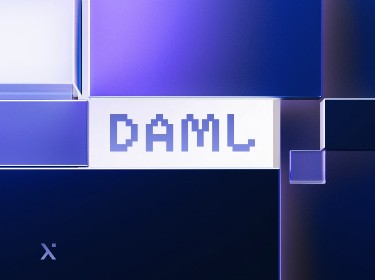Welcome to the new intersection of art and technology, a space that challenges and changes our concept of creativity. Let's explore the next generation of NFTs.
What is a generative NFT?
Generative art NFTs, where human creativity meets algorithmic precision, have emerged as an exciting frontier in the digital art space. Born from the innovative blend of generative art and blockchain technology, these unique digital assets, known as “generative NFTs,” have been making waves in the art world.
Generative art has a rich history, stretching back to the mid-20th century when artists began to use mathematical systems and algorithms to influence their creative output. Today, that same principle, coupled with blockchain technology, allows artists to craft distinctive digital art pieces, minted as generative NFTs, each possessing its unique identity and value on the blockchain.
Groundbreaking Generative NFT Projects
Generative NFTs are molding the landscape of art with their mix of creativity, coding, and blockchain technology. Here, we discuss several noteworthy generative NFT projects, showcasing diverse styles, themes, and complexities, all driven by algorithmic creation.
A review of these projects as of mid-June 2023 reveals different features and key metrics, illustrating the wide-ranging and deep potential of the generative NFT landscape.
| Collection | Creator | Market Cap | Total Sales | Creator Royalty | Sales in the Last Month | Minted Tokens | Created |
| Fidenza | Tyler Hobbs | Ξ43,296 | 1,334 | 7.5% | 14 | 999 | 2y ago |
| Chromie Squiggle | Erick Calderon | Ξ40,467 | 8,998 | 7.5% | 89 | 9,765 | 3y ago |
| Autoglyphs | Larva Labs | Ξ29,361 | 451 | 0% | 1 | 512 | 4y ago |
| Ringers | Dmitri Cherniak | Ξ25,906 | 897 | 7.5% | 3 | 1,000 | 4y ago |
| Lost Poets | Pak | Ξ9,563 | 39,430 | 10% | 282 | 28,171 | 2y ago |
| Gazers | Matt Kane | Ξ5,483 | 1,701 | 7.5% | 12 | 1,000 | 2y ago |
| Grifters | XCOPY | Ξ4,470 | 651 | 10% | 11 | 666 | 2y ago |
| Edifice | Ben Kovach | Ξ3,521 | 1,747 | 7.5% | 14 | 976 | 2y ago |
| Solvency | Ezra Miller | Ξ1,334 | 933 | 10% | 5 | 500 | 2y ago |
| AI Art House | AI | Ξ354 | 1,787 | 10% | 0 | 1,001 | 2y ago |
From Fidenza by Tyler Hobbs, appreciated for its abstract geometric designs, to Chromie Squiggle by Erick Calderon (also known as Snowfro), which appeals to collectors with its layered complexity, each project presents its own artistic world.
Autoglyphs by Larva Labs, launched four years ago, is another project that has attracted attention within the generative NFT space. Autoglyphs is rooted in algorithmic art, where the artwork and the artist’s process are inseparably intertwined. It stands apart for adopting a 0% creator royalty model.
These projects highlight the progression and future possibilities of generative NFT art. They serve as a resource for artists and collectors interested in navigating this evolving art sector.
Why Are Buyers Investing
![]()
Understanding why people are attracted to generative NFT art reveals several motivators. Here’s why buyers are putting their resources into these innovative digital assets.
Unique Features and Potential Returns: The allure of generative NFTs is largely due to their algorithm-based creations, resulting in one-of-a-kind pieces. For collectors and investors, the unique nature of these pieces often suggests potential for increasing value over time.
Self-expression: Generative NFTs come in a variety of styles and themes, allowing collectors to find pieces that resonate with their personal taste, thus enabling them to express themselves through their collections.
Support for Artists: Purchasing generative NFTs helps support artists in a significant way. The NFT model allows artists to maintain more control over their work and a larger share of the revenue, encouraging a direct relationship between creators and collectors.
Community Engagement: The rising popularity of generative NFTs has led to a vibrant community of enthusiasts, artists, and collectors. This forms an engaging environment where individuals can connect, form relationships, and potentially collaborate.
Deep Narratives: Ownership of a generative NFT often means owning a part of a unique creative story. The stories behind each piece offer an emotional connection for collectors, adding depth to the overall experience of ownership.
“Generative NFTs represent a thrilling evolution in digital artistry, attracting both connoisseurs and investors. The inherent uniqueness and the story each piece holds make them not just an asset but a vessel for personal expression,” states Paul Lee, a renowned NFT collector.
Where to sell an NFT collection?
If you are considering stepping into the realm of generative NFT art and creating your own collection, there are numerous platforms ready to display and sell your innovative creations. Below are some notable platforms where generative NFTs can be listed for purchase:
- OpenSea: Known as the largest comprehensive marketplace for NFTs, OpenSea provides a wide-reaching platform for your generative NFT art. With a vast, diverse audience and a reasonable transaction fee of 2.5%, OpenSea can offer a strong return on investment.
- Blur: Launched in October, it has quickly gained popularity due to its advanced features that cater to professional traders in the NFT market. Blur is a newer marketplace that focuses on professional traders. It offers unique features like sweeping across marketplaces to compare NFTs, no trading fees for NFT sales, and real-time price feeds.
- Foundation: Catering to a discerning clientele, Foundation is an optimal platform if your focus is on high-quality, distinctive generative art. This Ethereum-based platform charges a 5% transaction fee but offers access to an upscale market of serious collectors, potentially leading to higher returns.
- Rarible: Rarible is a democratic, community-governed NFT marketplace that welcomes generative art. With a 2.5% transaction fee and Ethereum-based transactions, Rarible can offer your collection exposure to a wide and varied audience.
- Art Blocks: Art Blocks is a dedicated platform for generative art, housing many renowned collections. This Ethereum-based platform uses a pricing model where artists set a fixed price for the initial piece, and the prices for subsequent pieces rise according to demand.
- KnownOrigin: An artist-centric NFT platform, KnownOrigin offers a variety of generative art pieces. The Ethereum-based transactions and variable fee structure provide flexibility for businesses and individual clients.
Entering the generative NFT market requires careful research on both the artistic concept and the most appropriate platform for listing your pieces. But with the right preparation and strategy, the world of generative NFT art can offer a promising opportunity to achieve a considerable return on investment.
Inspired to sell your generative NFTs differently? We've done it before! Check out xtingles— our custom-built ASMR NFT platform as an example of what we can create for you.
Quick ROI with Generative NFTs
![]()
Consider the Gucci case study, where the company masterfully integrated generative NFTs into their strategy, marking their 100th anniversary and reaching new digital audiences.
Case Study: Gucci’s Generative NFT Strategy
Celebrating its centenary, Gucci ventured into the generative NFT space. This decision was motivated by two factors. Firstly, the burgeoning NFT market was a new customer engagement avenue. Secondly, generative art’s nature resonated with Gucci’s design philosophy.
Gucci’s digital artists developed an algorithm inspired by the brand’s iconic patterns. These were transformed into code, generating distinctive digital art pieces, echoing Gucci’s focus on design originality.
Execution: OpenSea Auction
After generating the art, Gucci opted for OpenSea, the premier NFT marketplace, to auction its collection. OpenSea’s vast blockchain community exposure ensured wide audience reach for potential bidders.
Results: Financial and More
The auction results were notable. The top bid was a remarkable $25,000, demonstrating substantial direct financial return. However, the auction’s ripple effects were wider, increasing Gucci’s brand visibility and cementing its innovator status in the technology-fashion nexus..
Generative NFTs: Business Value Proposition
Gucci’s journey highlights generative NFTs’ potential for businesses. Such initiatives can drive significant ROI and be a robust customer engagement, brand building, and market expansion tool. Moreover, it signals a brand’s progressive stance and willingness to engage with digital transformation.
In essence, generative NFTs offer a persuasive value proposition, balancing direct financial returns with multi-dimensional branding advantages. They provide a fresh avenue for businesses to navigate the digital transformation, engage with new customer segments, and stake their claim in the digital art and blockchain future.
Future Trends in Generative NFTs
As we gaze into the crystal ball of generative NFT art, we see groundbreaking innovations that continue to push the boundaries of creativity and technology. Let’s delve into the future trends that are primed to shape the landscape of this fascinating space.
Personalized Generation: With advances in machine learning and AI, there may soon be options for creating generative NFTs that take personal characteristics, experiences, or preferences into account. This could allow for highly personalized art, perhaps even generating artwork based on an individual’s DNA or other unique attributes.
Our recent article Introduction to Generative AI provides a detailed look at the generative AI space, from its impressive benefits and use-cases to its limitations.
Augmented Reality Experience: AR advancements could take generative NFTs beyond static images. Art could come alive in our surroundings, offering immersive, dynamic, and personalized experiences. Art could exist beyond screens, enhancing our homes, streets, and social spaces.
Storytelling & Data Encryption: Generative NFTs may evolve to include more complex narratives or hidden layers of information. This could involve integrating elements of storytelling or data encryption into the generative process, offering potential utility beyond the aesthetic value of the art piece.
Fractional Ownership: As the market for NFTs continues to grow, we could see more developments around the fractionalization of ownership. This could make investing in high-value generative NFTs more accessible to a wider audience by allowing multiple individuals to hold shares in a single NFT.
Expanded Use Cases: Beyond the world of art and collectibles, generative NFTs could find applications in various sectors such as gaming, real estate, and intellectual property. These NFTs could serve as unique digital assets representing in-game items, digital land parcels, or elements of IP rights.
“The generative NFT space is in its nascent stage, yet it’s pulsating with immense potential. As technology evolves, so will the forms of generative art, delivering exciting new ways for self-expression, engagement, and investment,” says Dr. Ingrid Vasiliu-Feltes, an avid art collector and NFT enthusiast.
Conclusion
Having navigated the fascinating universe of blockchain IT solutions and NFTs, the myriad opportunities this innovative domain presents are now evident. You are equipped with insights; the next step is your leap into this revolutionary realm.
Remember, you’re not on this journey alone. PixelPlex’s AI development company is on standby to guide you through the integration of generative AI into your operations. Harness the transformative potential of this technology and reach out to us. Together, let’s pioneer unprecedented trajectories in the digital art sphere.




